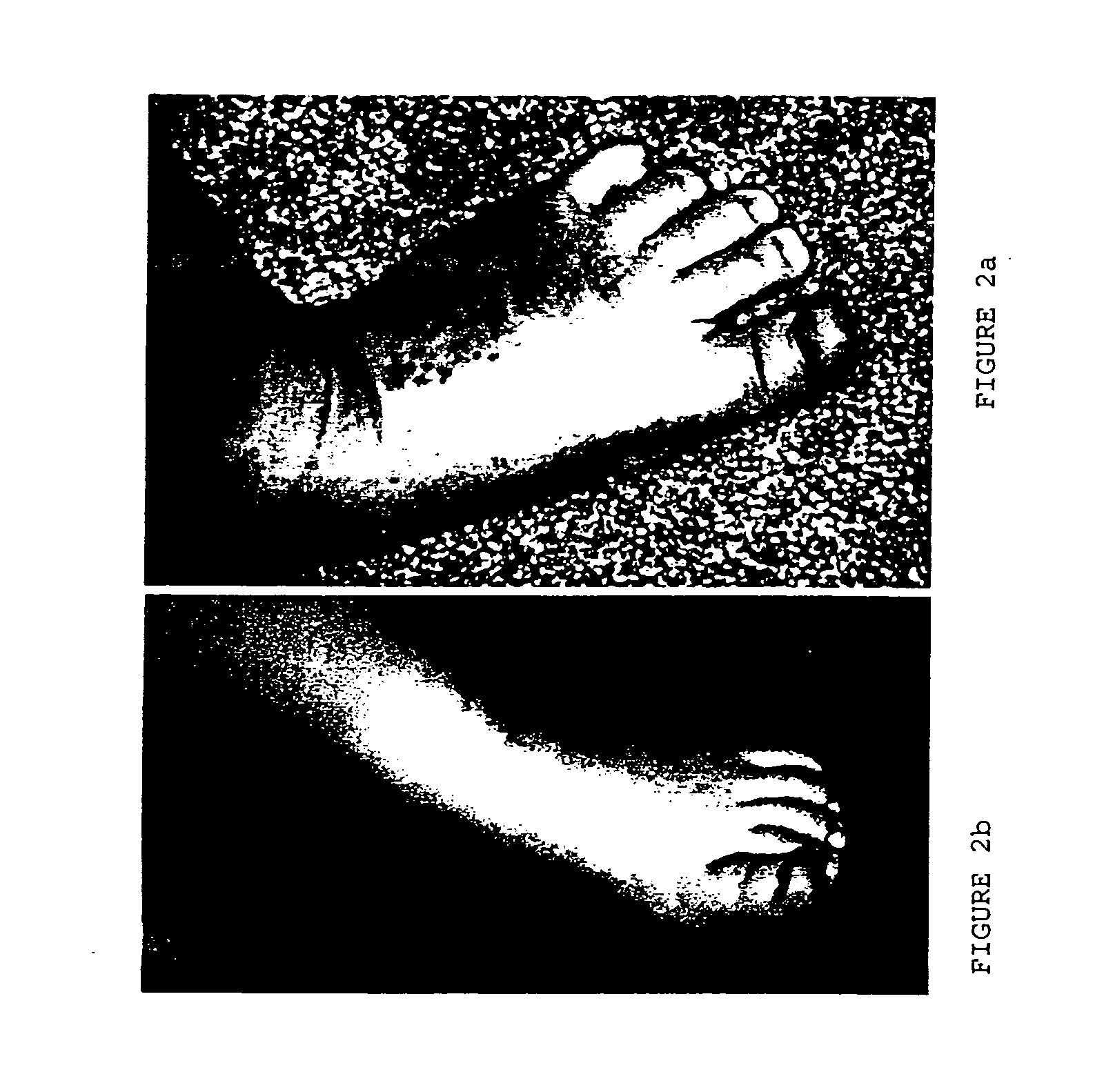The present invention employs an emollient base such as moisturizing agents to promote skin re-epithelialization in order to diminish disfiguring lesions. The emollient base may include a large spectrum of suitable substances, including but not limited to creams, moisturizing creams, ointments, oils, waxes, gels, lotions, liquid suspensions or dispersions, emulsions, emulsions comprising
oil in water, and the like, provided the emollient base is suitable for topical application on the skin, is substantially non-toxic and provides a suitable carrier for the non-emollient medicinal agents of the invention. A properly chosen emollient base may provide a certain amount of relief in itself for mild outbreaks of psoriasis or dermatitis.
Such a formulation suitable for topical application on mammalian skin may include glucosamine and extract from at least one
herb that elicits at least one of the following biological effects: anti-inflammatory,
antioxidant, antibacterial,
antimicrobial, anti-pruritic, anti-
platelet adhesion,
vasodilation or keratolysis. For example, a formulation including approximately in the range of 5-25% glucosamine by weight; approximately in the range of 1-10%
berberine by weight; approximately in the range of 0.5-7.5%
oleuropein by weight; and approximately in the range of 47.5-93.5% emollient by weight, is shown to mitigate skin ailments local to the area of application.
The present invention also includes methods for the treatment of skin ailments. The methods include providing a formulation having approximately in the range of 5-25% glucosamine by weight; approximately in the range of 1-10%
berberine by weight; approximately in the range of 0.5-7.5%
oleuropein by weight; and approximately in the range of 47.5-93.5% emollient by weight; and topically applying the formulation to the affected skin. Another method includes providing a formulation having glucosamine and extract from at least one
herb that elicits at least one of the following biological effects: anti-inflammatory,
antioxidant, antibacterial,
antimicrobial, anti-pruritic, anti-
platelet adhesion,
vasodilation or keratolysis; and topically applying the formulation to the affected skin. A further method for the treatment of skin ailments includes providing a formulation having glucosamine and at least one antioxidant anti-inflammatory in an emollient base and topically applying the formulation to the affected skin.
In contrast to the situation in the young, with increasing age, or with five or more years of immunosuppressive therapy as occurs in the case of
organ transplantation (and possibly also after the toxic therapies used for psoriasis or
atopic dermatitis), the density of the
connective tissue is compromised. The skin is thinner and squamous
cell cancer of the skin becomes more likely. It is of interest that PUVA treatments are only associated with a fourfold increase in
basal cell carcinoma of the skin, no matter how many exposures have occurred, whereas the risk of SCC is dosage related. This observation with PUVA suggests that the
thinning dermis (which is known to be due to UVA damage to collagen, rather than UVB) somehow promotes the development of SCC. The thinner
dermis, as mentioned above, is also associated with depressed
immunocompetence of the aging skin, as it rarely is seen in young skin except in the case of long-term
immunosuppression. Therefore, the architecture of the skin plays a major role in
immune modulation and glucosamine may play a major role in maintaining the normal architecture. Nonetheless, since psoriasis and
atopic dermatitis may strike at a young age, psoriasis is clearly not related to only the
thinning skin, in contrast to
skin cancer and decreased skin immune response. It is postulated herein that the denser skin, with increased mucopolysaccharides promoted by glucosamine, attenuates the cytokines elaborated by the activated T-cells. Attenuation of the T-
cell cytokines inhibits the inflammatory effect of the cytokines, possibly through
dilution. Even in dense young skin, this may be the effect of the glucosamine: to bind nonspecifically to cytokines or to entrap the cytokines in a muccopolysaccharide “net”, thereby inhibiting the inflammatory effect of the cytokines on the skin.
The synergistic effects of the two herbs and glucosamine results in a non-toxic highly
effective treatment for psoriasis that is without the side effects observed with virtually all other therapies for
moderate to severe psoriasis (mild psoriasis may be successfully treated with proper moisturizing). As illustrated by the following studies, the most common over-the-counter treatment for psoriasis, namely
coal tar, may be made more effective by the use of glucosamine, even at low concentrations of
coal tar. The herbal combination with glucosamine may be used to treat severe cases which berberine alone cannot.
 Login to View More
Login to View More 
